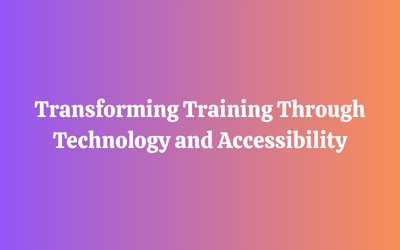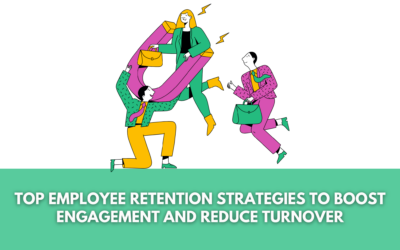What Is Learning Agility in Leadership?
Leadership must step up and serve as the foundation upon which the organization is built, good or poor. Ineffective management has the potential to ruin a business or organization. But what ensures proficiency? One of the most crucial KPIs to watch for in leadership is learning agility.
Agile leaders frequently possess strong self-reflection, mental agility, people agility, and, above all, change agility. These qualities aid kids in winning and in learning the ins and outs of the environment they live in. Agile leaders are also risk-takers and resilient, which enables them to elevate a regular business to new heights.
If you’re interested in finding out more about the benefits of learning agility for organizations and society, Continue reading ahead.
What Does Leadership Learning Agility Mean?
The ability of a leader to learn, unlearn, and adapt to changing stimuli is referred to as learning agility. In moments of ambiguity, agile leaders can revise and analyze their plans and develop solutions that ensure the best outcomes.
Learning agility’s function
Everyone who wants to succeed in life must possess the quality of agility. For leaders who want to advance to higher ranks, it is extremely crucial. A leader’s capacity to move rapidly in the face of change aids in decision-making. Additionally, it enables the leader to improve their abilities so they don’t jeopardize their position and the safety of others.
Use the recent Covid Crisis as an example to better comprehend the function of agility. For everyone, the epidemic presented a unique predicament. Markets were declining, and corporations were suffering significant losses. Most business owners bowed up to the crisis and allowed their companies to fail.
However, agile leaders anticipated the shift in circumstances, promptly assessed their options, and developed creative solutions to make the best of a challenging condition. Social media networks and online delivery services were employed by agile executives to assist maintain revenue levels. They even took on temporary losses to ensure that their companies could survive and avoid bankruptcy. This is only one of the numerous ways that adaptable leaders deal with challenging circumstances.
Learning agility characteristics
Everyone emphasizes how crucial learning flexibility is for leadership. On how to master the art of agility, however, there is virtually any material available. Here are a few actions you can take to increase your agility.
1. Goal-setting
Some have objectives and those have aspirations. If your objective is not followed by actionable steps in the appropriate direction, it will be irrelevant. Agile leaders set attainable goals for themselves and seek to fulfill those objectives.
2. Recognising Your Talents
Once your goals have been established, it’s critical to check that they complement your skill set. Consider that you have a psychology degree and that you want to become a world-class builder. Although some people can defy all odds and accomplish the seemingly impossible, the majority of people must set objectives that are consistent with their level of education and professional experience.
3. Assist others in becoming more agile.
One of the most crucial qualities of a leader is that they not only strive to better themselves but also endeavor to enable and develop others. These executives understand the value of having rapid thinking.
They aim to assist others in acquiring these talents through coaching and mentoring. This includes motivation, practical assistance, and advice.
4. Learn to Communicate Exceptionally Well
If you struggle with good speech, you will not be able to accomplish much in life. You need perfect communication skills if you want to develop into an agile leader. Start by expanding your vocabulary and language skills.
Make it a point to speak in a more commanding language regularly. This helps you explain a significant topic in fewer words and cuts down on language fluff. Be careful to work on your nonverbal communication as well. Your audience gets a positive impression from this.
5. Examine and Adjust Your Strategy
Try B if A doesn’t work. Try C, D, or perhaps E if B doesn’t work. A dynamic leader moves quickly and doesn’t think twice before acting. Agile leaders use trial and error to make sure they do what is best for the work at hand rather than focusing on one “great” concept. They consider and alter their strategy until they come up with one that works effectively for them.
Why Is It Important to Learn Agility Today?
Making an impact on the world is made easier by developing leadership agility. It ensures achievement both inside and outside of an organization. Here are all the justifications for your need to develop into a more agile leader.
1. Learning agility in leadership is beneficial to everyone
It helps the nimble leader stand out in their surroundings. They can finish challenging activities faster because of it. Additionally, it assists them in becoming a force to be reckoned with and a role model for others. Agile executives provide significant and speedy results for their organizations. Agile leaders react rapidly and generate novel ways to address the current situation when external stimuli turn unfavorable.
2. It Encourages Innovation and Creativity
Agile businessmen with great innovation potential include Mark Zuckerberg and Elon Musk. Learning agility in leadership is the ability to adapt fast and move beyond the present or the past. Your forward-thinking mentality aids in your development and inspires you to develop novel solutions to commonplace issues.
3. A Mindset of Learning Promotes Growth
It’s good to grow naturally and gradually. But a growth attitude and a persistent desire to advance your abilities will get you far. Agile leaders don’t focus on themselves. They don’t think of themselves as superior. They understand that while they do have flaws, they can overcome them and become something amazing. They can consistently advance and broaden their knowledge thanks to this way of thinking.
4. Makes you More Flexible
You can learn a new skill set in one area and use it in another by developing your leadership agility. This increases your adaptability, and if the last pandemic taught us anything, it’s how crucial it is to be prepared for any circumstance. You must develop agility because it is both a current necessity and the single most crucial element in determining one’s future success.
5. Advances the state of the world
Agile leaders have a positive impact on their communities as well as the workplaces they work in. They are adaptive, keen thinkers, and diligent workers. They are therefore ideal for bringing about constructive change in society. They also motivate and inspire others to realize their full potential. Agile leaders with great talent and the ability to solve complicated issues are Jacinda Arden and Abraham Lincoln.
Evaluation of Learning Capability
There are a few criteria to watch out for whether you’re searching for new leaders or evaluating your learning agility. It will help you become an unstoppable force in the world if you possess all five types of agility.
1) Mental Flexibility: Complexity Handling
When you have mental agility—the capacity to resolve complicated issues quickly—you are more agile as a leader. Sometimes, leaders must make split-second judgments that are both important and urgent.
Leaders can’t afford to take chances while making decisions, whether it’s whether to launch a counterattack or buy stocks. Because of this, gaining agility is essential to a leader’s job.
2) People Agility: The Capability to Work With Various Individuals
Individual agility, which generally translates to the capacity to cope with and collaborate with a varied set of individuals, is another crucial quality. Leaders cannot isolate themselves and exclusively interact with followers of the same beliefs. They must expose themselves to challenging events and scenarios.
They must speak and persuade a wide range of people to accomplish this. They are better able to deal with these various individuals because of their ability to understand their dynamics.
3) Change Agility: The Capacity to Adapt
Changeability—the capacity to adapt to any form of change in the situation—is the third most crucial component of learning agility in leadership. Great leaders with fast thinking include Nelson Mandela and Abraham Lincoln. When disaster or crisis struck, they swiftly accepted the circumstance rather than moping around.
They had the bravery to act and think swiftly as a result of this. They were also able to serve as an example for those leaders who are averse to change and prefer to stay there.
4) Self-Awareness: The Capability to Acknowledge One’s Weaknesses
Agile leaders are more aware than others that nobody is flawless. They may be the best at their occupations or have excellent leadership qualities, but they are aware that they will inevitably fall short in certain respects. Self-aware leaders are agile.
They are aware of the advantages and disadvantages. They try their hardest to minimize their drawbacks and maximize their advantages. They accept responsibility and make an effort to make amends rather than placing the blame for their errors on others. People’s trust in leadership is increased by doing this.
5) Results Agility: The Capacity to Produce Results
Even if you possess all the traits of a great leader, you could still be unable to produce the desired outcomes. There are moments when bad luck is to blame, but most of the time, it’s your lack of effort. Agile leaders are aware that the pond is filled with fish. They are aware that they are easily replaceable.
Because of this, agile leaders put in twice as much effort to produce the desired outcomes and fulfill their commitments. They are also aware of the reasons why leaders fall short, and they work hard to improve themselves by taking lessons from others’ errors.
How Do Businesses Assess Learning Ability?
Warner Burke, a professor of psychology and education at Columbia University, claims that about 50% of the executives chosen by businesses are ineffective at what they are supposed to be doing. He believes that these leaders are not agile learners. Here’s how to gauge learning agility in leadership if your organization is seeking capable leaders.
- swift action on concepts
- adaptability to new concepts
- experimental strategy
- Performance risk-taking
- Interpersonal abilities
- Capacity for teamwork
- extremely reflective
1. Reacting quickly to ideas
Companies should evaluate a candidate’s capacity to execute ideas as soon as feasible while looking for agile leaders. Avoid hiring people who have lots of plans and ideas but lack the courage or tenacity to carry them through. Watch out for those who not only have original ideas but also see them through to completion. These are the individuals who will bring about global transformation through their transformative leadership.
2. Openness to Fresh Ideas
Agile executives can change their perspectives quickly. They don’t become focused on an idea, even if they work hard to promote it. Instead, they seek fresh opportunities that will enable them to do even more. When outstanding leaders used social media tools to step up their game and emerge from the crisis during COVID, this skill was put to the test.
3. An experimental strategy
An exploratory mindset is another trait that many individuals lack. Great leaders are constantly trying to improve the status quo, whether in business or society. But doing so requires taking chances and not being scared to oppose the status quo, which is the only way to succeed. Therefore, when searching for agile leaders, be careful to discover people who don’t always do things according to the book but instead come up with original solutions.
4. Taking Performance Risks
Consider Sarah and Malik, two young, aspiring leaders who are employed by the same business. Sarah wanted the business to raise pricing when Covid hit to maintain sales. Malik, on the other hand, wanted the business to survive even if it had to suffer losses.
The business would have shut down and lost the trust of its clients if it had heeded Sarah’s counsel. The company was able to survive the challenging period and avoid bankruptcy by heeding Malik’s counsel.
5. Social Abilities
Speaking well and being able to speak at all is a talent that very few individuals possess. Companies are continuously on the lookout for individuals with strong communication skills. Agile leaders not only have excellent ideas, but they can also communicate them in a way that motivates and encourages others to follow them.
6. Capacity to Work Well with Others
Collaboration with a wide range of people is another aspect of leadership agility. Agile leaders can get along with everyone and avoid disputes, whether they are coworkers, rivals, or working across departments. They are also polite and likable individuals who can effectively command a room without offending anyone.
7. Excellent Self-Reflection
Although it may be challenging to evaluate, agile leaders will possess a talent for self-improvement that is lacking in others. They’ll be thinking about themselves all the time. These nimble leaders will look within themselves and attempt to improve themselves rather than dwelling on the past or placing too much emphasis on external conditions. They continue to grow as a result of this.
How Can I Improve My Agility?
1) Be an Explorer
Agile leaders will always hunt for chances or platforms that will help them achieve their goals. Even the most challenging circumstances have benefits for the seeker. Agile leaders seize every chance to improve a terrible situation, even if the rewards aren’t huge.
2) Develop Your Talents
Without being the absolute greatest at a given task, you cannot revolutionize a business or a society. Make sure to polish your skills as much as you can by enrolling in classes, receiving training, or receiving coaching. Although a leader may not have to accomplish everything oneself, they should be competent enough to.
3) Apply What You Discover
Your immediate environment is constantly in motion. It transforms swiftly and gives you the chance to see many remarkable things. It is your responsibility to observe the world with keen eyes and discover what it has to offer. Make sure you develop qualities like perseverance, hard effort, and patience through interactions with people and the natural world. Internalize them to make them a permanent part of your personality.
4) Adapt, Modify, and Enhance
You won’t need to alter or constantly better yourself if you desire to lead a routine and everyday life. However, you must adjust to the circumstances if you want to be a leader that inspires and empowers others. It is your responsibility to change your tempo and sway with the tides even though society may not comprehend you and the world may not operate on your schedule.
What Characteristics Enhance Your Learning Process Overall?
1) High Willpower
To be determined is to accomplish things the right way, to see things through, and to finish a task even though everyone is against you. If you are a youthful, motivated individual, you might begin with a straightforward habit of finishing your tasks. You’ll become more agile in the future as a result of this.
2) High Resistivity
Life is challenging. You aren’t usually given everything on a silver platter. But those who persevere and are tenacious can change the course of events and achieve the greatest success in their chosen fields. Additionally, resilient people are valued higher and given more challenging yet fulfilling duties.
3) Better Organisational Capabilities
Consider Sam and Donna as two individuals. Sam was always the disorganized student, with his belongings dispersed across his room. Donna, on the other hand, was well-organized and consistently turned in her work on time. She never had trouble getting things done or finding things. Sam struggled to finish duties on time and lost stuff frequently. Who do you predict will have more nimble leadership skills in the future?
4) Ongoing Education
If you want to be an agile leader, improve yourself. Read all the books you can. Next, keep researching ways to express your ideas through journaling and blogging. You become more influential in society as a result of this. Additionally, it improves your communication skills so that you might have high prospects.
Conclusion
The capacity to quickly forget, relearn, and continuously learn new mental practices and schemas is crucial, and it distinguishes you as a superior leader for the future. Leadership agility is useful in difficult situations. It not only aids in speedy decision-making but also aids in situational adaptation.
Learn More
Our News
- AI
- Animations
- Articulate
- Articulate 360
- Articulate Engage
- Articulate Live
- Articulate Presenter
- Articulate Quizmaker
- Articulate Replay
- Articulate Review
- Articulate Storyline
- Articulate Storyline 3
- Articulate Studio
- bite sized learning
- Characters
- Content Library
- Corporate Communication
- E-Learning
- e-Learning Authoring Tools
- Employee Engagement
- Game-Based Learning
- Gamification
- Gamiflexer
- Go Sales
- Healthcare
- Instructional Design
- Interactivity
- Knowledge Transfer
- L&D Trends
- Learning
- Learning & Development
- Learning Experience platform
- Learning Management System
- LMS
- LXP
- Microlearning
- mLearning
- Mobile Learning
- Nugget Learning
- Online Training
- Peek
- Performance Support
- Preso
- Quiz and Assessment Platform
- Replay 360
- Rise
- SCORM
- Screen Capture
- Software
- Storyline 360
- Studio 360
- Training Management
- Trainings
- Uncategorized




